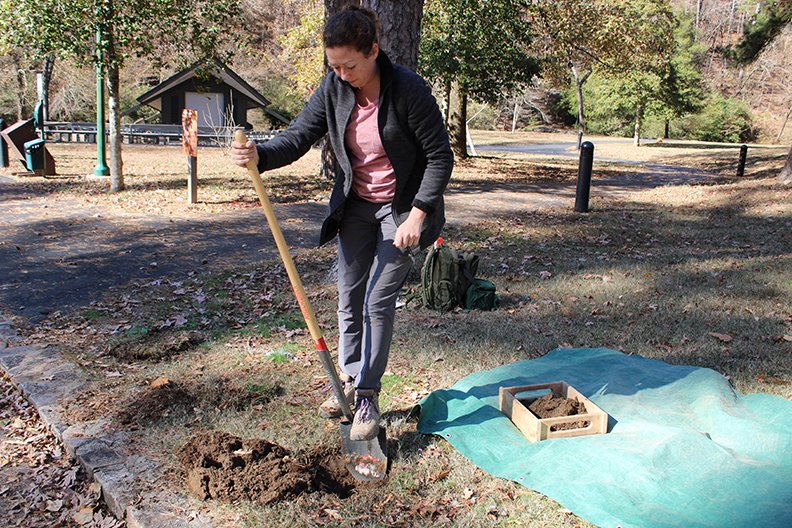Hiking along the Hot Springs National Park trails system will soon become both safer and more informative.
The National Park Service is installing 77 new signs along the national park's trails this winter to make it easier for hikers to find their way around and learn some interesting facts about the park along the way.
Hot Springs National Park museum curator Tom Hill said that the new signs are the latest part of a project that began several years ago to make the park safer. An earlier part of the project entailed installing flashing caution lights at trail crossings on roadways.

"A bunch of people get lost on our trails," Hill said, referring to the latest part of the project.
Two types of signs are being installed. Sixty-six informative signs will be located along the trials, and 11 trailhead signs will be installed with "better maps" that previous signs, Hill said.
Hill said the 66 trail signs are a good mix of educational information, historical information and random facts. He said the park sought public input as far as the information that should go on the signs a few years ago through public meetings and Facebook.
Examples include information on the Imperial Bathhouse, Goat Rock, the green boxes that cover the thermal springs and extinct and endangered wildlife.
While the signs will make the trails more educational, Hill said that they will also "make it more inviting to walk on trails."

Mary Hill, a natural resource museum technician, helped design the new signs. Calling it a team effort, she said it took around four months to complete the design work.
The signs are made out of fiberglass. Tom Hill said that they made two of each sign, and they hope to get a combined 20 years of use out of the 154 signs they made.
Hill said that color-coded markers also will be installed on the trails to help hikers identify which trail they are on. This, Hill said, will "give visitors more confidence" while on trails.
While a handful of signs have already gone up, the vast majority are in storage waiting for the green light to be installed. Hill said that before the new signs can be put up, HSNP park archaeologist Victoria Reichard has to first test each potential sign location.
Reichard said the larger trailhead signs require digging three test holes, while the trail signs require two. She said she is looking for anything historically significant that is at least 50 years old. If she finds something of this nature, then the sign has to be moved.
For example, Reichard said that a few signs have had to be moved because she found a foundation that she estimates to be over 100 years old.
Reichard has been around the park for the past couple of months digging these holes, and during the course of her work, the need for the signs has become more evident. Multiple times a day, tourists will ask her for directions.
"I'm out almost every day (and) over and over and over (I hear) 'I can't figure out which trail I'm on,'" Reichard said.

When interviewed, Reichard said she still has around 27 sites to check, which she estimates will take her a week to complete. After she is finished, her work has to be reviewed. Then, the maintenance crew at the park will install the signs. Hill said that sign installation hopefully will start in January.
A few signs have already gone up in place of older signs. New trailhead signs, with updated maps, are now located at both ends of the Grand Promenade, and a sign explaining the history the bandstand that was located along the promenade was installed near where the long-gone structure was located.
Local on 11/18/2019
